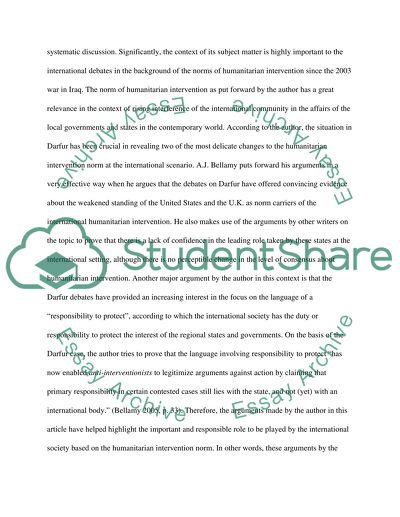Cite this document
(“Responsibility to Protect or Trojan Horse: The Crisis in Darfur and Literature review”, n.d.)
Responsibility to Protect or Trojan Horse: The Crisis in Darfur and Literature review. Retrieved from https://studentshare.org/history/1437907-esponsibility-to-protect-or-trojan-horse-the-crisis-in-darfur-and-humanitarian-intervention-after-iraq-by-bellamy
Responsibility to Protect or Trojan Horse: The Crisis in Darfur and Literature review. Retrieved from https://studentshare.org/history/1437907-esponsibility-to-protect-or-trojan-horse-the-crisis-in-darfur-and-humanitarian-intervention-after-iraq-by-bellamy
(Responsibility to Protect or Trojan Horse: The Crisis in Darfur and Literature Review)
Responsibility to Protect or Trojan Horse: The Crisis in Darfur and Literature Review. https://studentshare.org/history/1437907-esponsibility-to-protect-or-trojan-horse-the-crisis-in-darfur-and-humanitarian-intervention-after-iraq-by-bellamy.
Responsibility to Protect or Trojan Horse: The Crisis in Darfur and Literature Review. https://studentshare.org/history/1437907-esponsibility-to-protect-or-trojan-horse-the-crisis-in-darfur-and-humanitarian-intervention-after-iraq-by-bellamy.
“Responsibility to Protect or Trojan Horse: The Crisis in Darfur and Literature Review”, n.d. https://studentshare.org/history/1437907-esponsibility-to-protect-or-trojan-horse-the-crisis-in-darfur-and-humanitarian-intervention-after-iraq-by-bellamy.


